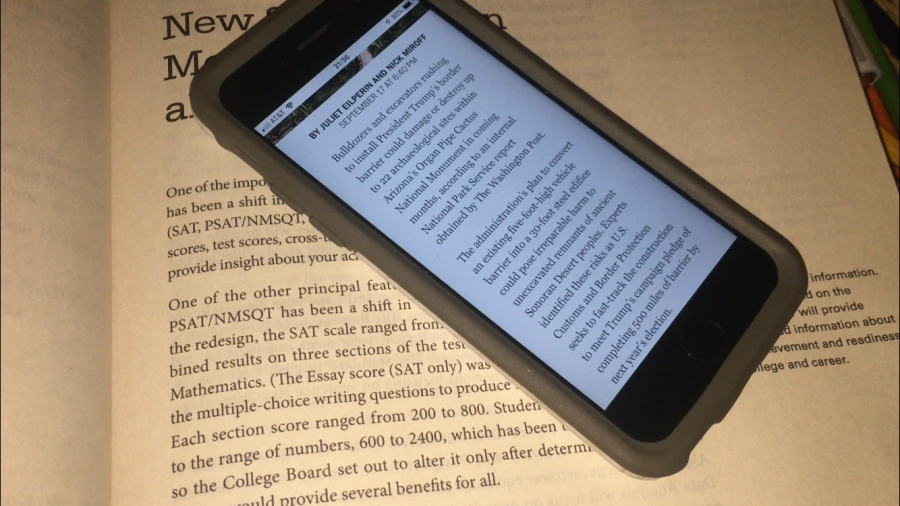Screens Vs. Pages
September 20, 2019
When was the last time you picked up your favorite childhood novel, felt the weight of the book, listened to a familiar crack as you opened it, and smelt the aged pages? In this digital age, many people are transitioning to ebooks. Ebooks are an alternative for page-turners around the globe.
These devices are turning heads for many reasons. Ebooks are tablet-like devices with the sole purpose of storing digital books. These digital books can be read from computers and smartphones as well. Annually the US uses about 30 million trees to publish books; ebooks are saving millions of trees. Although the ebook vs. book debate may never be settled, many are hopping on the technology train and here’s why.
Ebooks are designed to be flexible. Readers can customize font size, font color, background color, line spacing, margens and even the contrast of the display. Some have software that dims out the blue lighting in the display to reduce eye strain. This is very useful for children and those with eye issues.
Late fees are a problem of the past with ebooks. This is because when a title is checked out, the ebook downloads it. Since books are downloaded, there is no need for wifi; most ebooks can store 1000s of books on a single memory card.
With new technology coming out every year weight, among other things, is not an issue. Most ebooks have software that dims the blue lights on the screen to prevent eye strain. The all-new Amazon Kindle weighs about six ounces and can hold around 2,100 books. Once readers have adapted to ebooks, some may feel the freedom of posture is a major benefit as well.
For those who are more touchy-feely, traditional books seem to be the cream of the crop. Having a physical book compared to an electronic alternate has many advantages that readers tend to disregard.
First off, readers with an ebook need to charge their device. Readers with books do not need to worry about how much battery is left on their read. Skimming the context of books is also more handy with a physical book. This is because instead of scrolling through text on the screen, readers can flip through the pages comfortably.
Ebooks can seem boring after a while. Some readers like the weight and size variation that traditional books bear, let alone the pictures and illustrations that don’t display the same on-screen.
According to the 2018 Academic Student Ebook Experience Survey sponsored by EBSCO, conducted by Library Journal’s research department, most college students prefer to read print books for pleasure. Whereas when conducting research, almost two-thirds prefer ebooks.
The DRM (Digital Rights Management) poses a threat to student ebook readers. The DRM has restrictions on printing portions of content and downloading chapters or entire ebooks for offline reading. According to the survey conducted by Library Journal, 56% of college students were frustrated with DRM laws.
This is extremely frustrating for students who have already purchased ebooks and cannot use them offline. It is no surprise that many still carry traditional books with them.
In our right-now instantaneous society, ebooks seem to be a superb choice, but have their drawbacks. Although ebooks have a bright future in our world of technology, the paper book will always be a classic.


